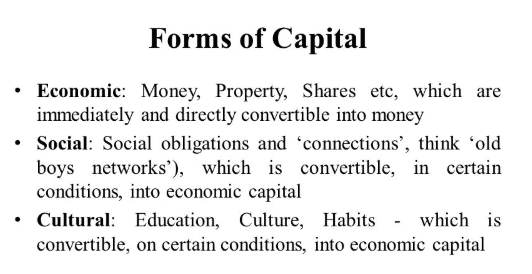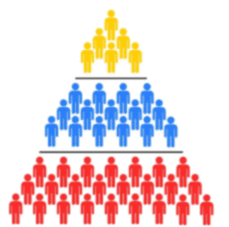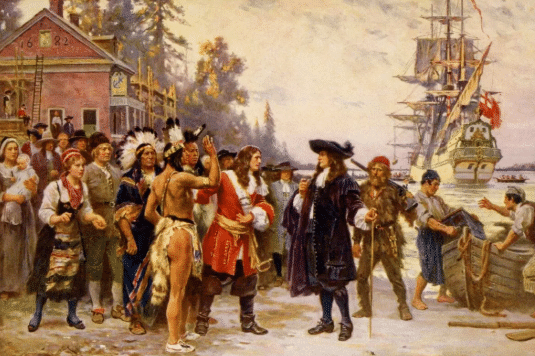|
False. Social inequality and exclusion are not just economic but also encompass social factors such as caste, gender, and ethnicity. |
Card: 4 / 32 |
|
Fill in the blank: The three forms of capital that contribute to social inequality are economic capital, cultural capital, and ___ capital. |
Card: 5 / 32 |
|
What is the term used to describe the systematic ranking of categories of people in a hierarchy? |
Card: 7 / 32 |
|
True or False: Social stratification is solely determined by individual abilities and efforts. |
Card: 9 / 32 |
|
False. Social stratification is a characteristic of society as a whole and is influenced by systemic factors. |
Card: 10 / 32 |
|
Fill in the blank: Social stratification persists over ___, often linked to family inheritance. |
Card: 11 / 32 |
|
Untouchability refers to the extreme social discrimination against certain castes, where members are considered impure and subjected to exclusion and humiliation. |
Card: 14 / 32 |
|
Fill in the blank: The caste system is justified through ideologies that often emphasize purity and ___ among different castes. |
Card: 15 / 32 |
|
Prejudices create and reinforce stereotypes that lead to discrimination and exclusion of certain groups based on caste, gender, or ethnicity. |
Card: 18 / 32 |
|
True or False: The term 'Dalit' means 'privileged' in the context of Indian society. |
Card: 19 / 32 |
|
False. 'Dalit' means 'downtrodden' and refers to communities historically subjected to oppression. |
Card: 20 / 32 |
|
Social exclusion involves systematic barriers that prevent individuals from accessing resources and opportunities available to the majority, including education, healthcare, and employment. |
Card: 22 / 32 |
|
Fill in the blank: The Other Backward Classes (OBCs) are identified as groups that are socially and educationally ___ compared to more privileged castes. |
Card: 23 / 32 |
|
The main dimensions of untouchability include exclusion, humiliation-subordination, and exploitation of the affected communities. |
Card: 26 / 32 |
|
Fill in the blank: Legislation against caste discrimination includes the Scheduled Castes and Scheduled Tribes (___ of Atrocities) Act. |
Card: 27 / 32 |
|
True or False: The caste-class correlation has become completely obsolete in modern India. |
Card: 29 / 32 |
|
False. While the caste-class correlation has weakened, it remains stable at the macro level, affecting life chances. |
Card: 30 / 32 |
|
Colonialism exacerbated social inequalities by enforcing discriminatory practices and creating systemic barriers that marginalized certain groups, which persist in modern society. |
Card: 32 / 32 |
 Completed! Keep practicing to master all of them. |











































